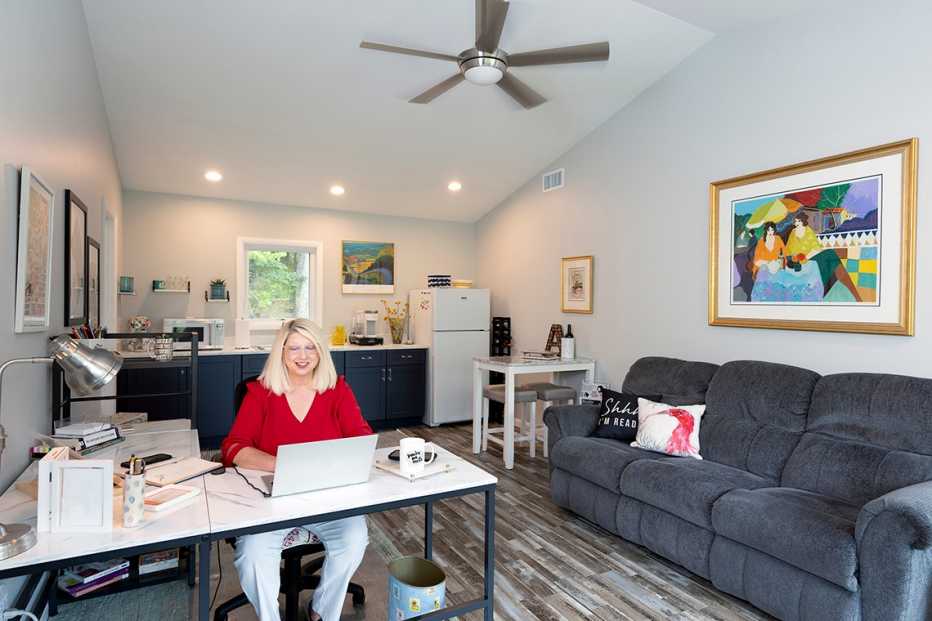AARP Hearing Center


Aging in place has become big business, as contractors and handymen install grab bars, build walk-in showers, widen doorways, upgrade kitchens and add first-floor bedrooms. Suddenly, even adding elevators to your house is a thing. But is redoing big homes the only path to happily aging in place?
The classic single-family home in the suburbs, after all, was mostly designed with growing families in mind, both in terms of the structures themselves as well as the sometimes isolating large lots and car-centric neighborhoods. And in a 2021 AARP survey, more than three-quarters of adults 50 and older said they wanted to stay in their homes or their communities as they age. For many of us, it turns out, aging in place isn’t so much about the home as the community — both the people and places.
AARP The Magazine Special Edition
AARP takes a look at how aging has evolved and improved over the decades — and how it likely will change in the years ahead.
So, more and more older Americans are remaining in their community, but “downsizing their way to happiness,” says Will Johnston, executive director of the MicroLife Institute, a nonprofit that built a neighborhood of eight 500-square-foot cottages on a half-acre lot near downtown Clarkston, Georgia, 11 miles northeast of Atlanta. (AARP Georgia is a sponsor of MicroLife.) “They’re reducing their footprint, especially all the boomers who were living in the extra-large 3,500-to-5,000-square-foot homes.”
And they are being offered increasingly attractive options — smaller, modular and more. Here are some of the housing choices available to older Americans.


A modular home in an existing neighborhood
How do you get a new house in an old neighborhood? A new initiative in Pittsburgh may show us the answer. On two empty lots, a group called the Housing Innovation Alliance and its partners are developing two factory-built concept homes aimed especially at older people who want to remain in Pittsburgh, but in a modern house that better suits their needs. “You want to stay in your neighborhood because your friends are there, and that connectivity can keep you young and safe,” says Dennis Steigerwalt, president of the alliance, which includes 800 builders responsible for 40 percent of U.S. housing starts.
The first concept property is a townhome that will have a 660-square-foot studio unit on the first floor and a three-bedroom, 2,007-square-foot home on the second and third floors. It is being built by Structural Modular Innovations, a modular home builder just north of Pittsburgh. The home was scheduled to be assembled on its lot in October. “You have the flexibility to live in the upstairs when you’re younger, and when you’re ready, you can flip to the one-story unit downstairs,” Steigerwalt says. The other concept home, from Pro Builder Media and SGC-Horizon, features two side-by-side townhouses, each with two 2,024-square-foot units that have three bedrooms, 3½ bathrooms, a loft, an office, a one-car garage and outdoor living space. The units are for sale and will be ready in April. “We’re aiming for easy maintenance on tight lots,” says Rich Binsacca, editorial director of Pro Builder Media, which produces the official publication of the National Association of Home Builders. “These buyers are active but not really interested in cutting the grass or tending a large garden. They say, ‘I can’t be on my knees anymore.’ ”
This new trend of infill development in walkable neighborhoods is likely to grow in the future, says Teri Slavik-Tsuyuki, founder of the America at Home Study; the home from Pro Builder Media and SGC-Horizon was designed using data from the study. Driving this trend are homebuyers in their late 50s and early 60s, whom consumer insights firm Kantar calls “full throttle” boomers. Their biggest interest in choosing a new home is not saving money; rather, environmental sustainability and how the home contributes to their health and wellness are more important factors.
“There are different segments of boomers who all behave differently,” says Slavik-Tsuyki. “The younger are very different than the older.”


A 55-plus neighborhood, with a twist
Age-restricted communities have long offered smaller single-family homes or condominiums, with neighborhood amenities like clubhouses, pools, tennis (now pickleball) courts and sometimes golf courses. There are no families with children under these roofs, providing older people with a new sense of community. But in at least one modern community, the families can be nearby. In this experimental idea trend, pockets of 55-plus neighborhoods are being built within a larger, multigenerational development.













































































More From The Age Issue
'AARP The Magazine' Age Issue: A Digital Only, Bonus Edition
To mark our 65th birthday, AARP is publishing an extra, digital-only edition of 'AARP The Magazine'
4 Strategies for Making Your Money Last
Here’s how to ensure you’ll have the cash you need for as long as you live
How You Can Have Ageless Style
AARP selected 10 iconic women over 50 and asked a fashion expert for tips you can take away from each